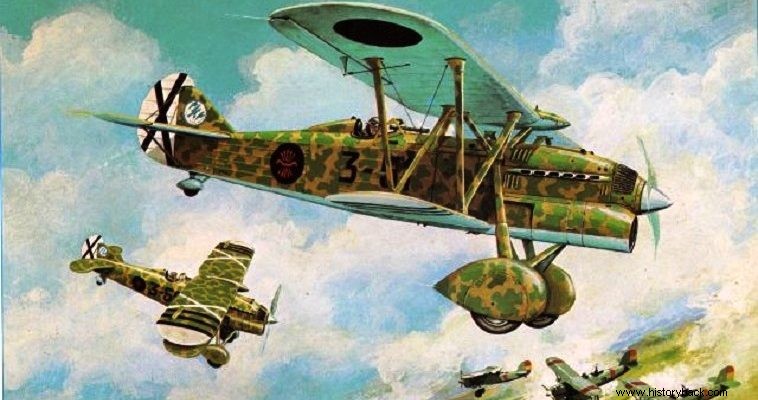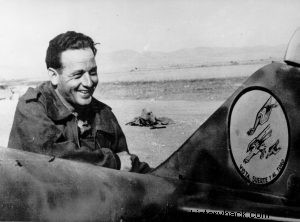
Joaquin Garcia Morato was born in 1904. He was the son of an infantry officer. He entered the military academy at the age of 16 and with the rank of second lieutenant fought in Spanish Morocco against the rebel locals. In 1925, however, he decided to become a pilot. Participated in operations flying D.H.9A and Bristol Fighter F.2B aircraft. He flew 57 combat missions and was wounded twice by ground fire.
Then he flew seaplanes. In 1928 he was nearly killed when his plane crashed. He remained in the hospital for a year. However, he was an excellent operator and one of the best at manoeuvres. In 1934 he participated in the operations against the rebels in Asturias.
Various placements followed until the outbreak of the Spanish Civil War as he was out of favor with the Popular Front government. Morato was on holiday in Britain when war broke out. He immediately returned and joined the nationalist camp.
On 12 August 1936 he achieved his first shoot down, flying a Nieuport Delage 52 shooting down a Vickers Vildebeest of the Democrats. He then began flying the most modern German He 51 fighter with which he shot down, on August 18, a Democratic Nieuport Delage 52 and a Potez 540 bomber.
On September 2 he shot down another Nieuport Delage 52. On September 11, flying an Italian Fiat CR.32 fighter he shot down another Nieuport Delage 52 and officially became ace with 5 kills. In the autumn, as now the head of the "Blue Patrol", (swarm) he shot down six more Democratic aircraft (five French and one British Hawker Fury).
On 5 November he shot down the 12th enemy aircraft, a Potez 540, while on the same day he shot down the first Soviet fighter, a Polikarpov I-15. On 13 January he achieved a real feat by shooting down two Soviet Tupolev SB bombers which were faster than the CR.32 he was flying.
"After several days, after studying the enemy's attacks on Cordoba, I knew at what height the enemy bombers flew and from what direction they usually appeared. With all this in mind I began patrolling at 16,500 feet above the city. One day I spotted two bombers approaching at high speed. I flew at them at maximum speed and that they were twin engines. I opened fire aiming at the engine of one of them and it soon caught fire leaving a line of thick black smoke.
“The wounded bomber turned back and I followed it to see if it would crash. And the second came back. The one hit actually crashed to the ground… The second one opened fire on me from a distance of 360 m. It was a dangerous moment for me… I kept my cool and with a sharp turn he was in firing position and I opened fire. Luck was on my side and in a few moments the bomber fell, burning, into a spin and fell to the ground", said Morato after the air battle.
On the 18th of the same month, he shot down two I-15s. In March he took command of a squadron and then a squadron with two pursuit squadrons, having already achieved 18 shootdowns. Three more followed in June and another five in July. Of these, on July 15th he managed to shoot down two modern for the time Soviet I-16 fighter jets that were superior to the Fiat in every area.
On October 3 Morato was shot down for the first time accidentally by a Spanish pilot. However, he managed to land his plane. even with the engine off. In 1937 he achieved two more downs, one in September and one in December. 1938 proved to be a productive year as well, with Morato achieving 11 confirmed kills and one probable, bringing his total to 39. On January 19, 1939 he achieved his last shoot down, a Soviet I-15.
On April 4, however, fate decided badly for him. During a demonstration for the press his aircraft crashed into the ground and as a result he was ignominiously killed. Until then he had 1,012 hours of combat flights, 40 confirmed shootings, one common, one possible, while he had caused damage to three more enemy bombers.

